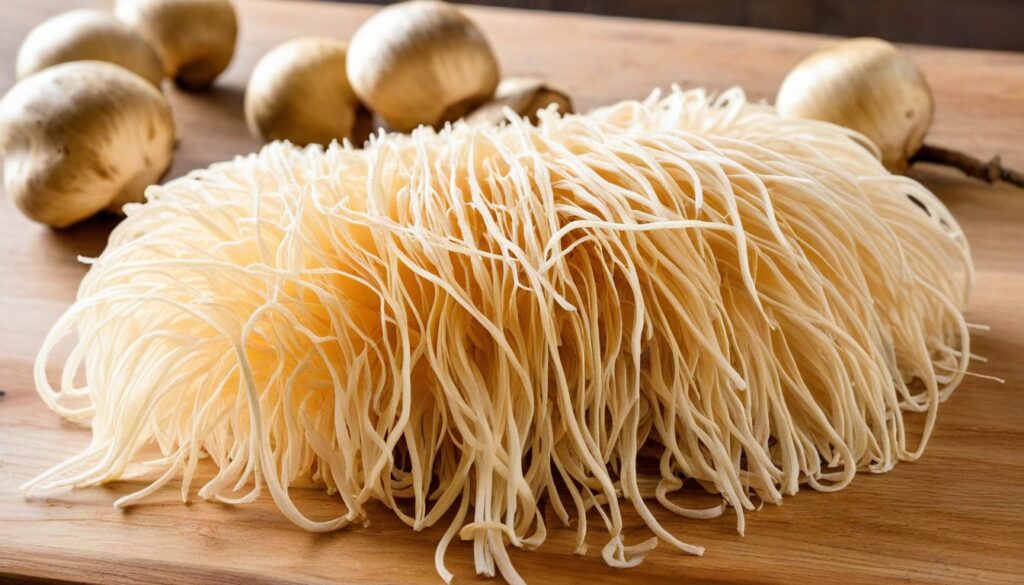If you’re a food enthusiast, you should definitely try the unique flavor and texture of dehydrated Lion’s Mane mushrooms. These fungi are not only delicious but also boast numerous health benefits. Dehydrating Lion’s Mane Mushrooms is a simple process that can be done either through air drying, using an oven, or a food dehydrator.
Key Takeaways
- Dehydrating Lion’s Mane mushrooms is an easy way to preserve their unique flavor and texture.
- The success of your dehydration process depends on selecting the right mushrooms and properly cleaning and preparing them.
- You can dry Lion’s Mane mushrooms using various methods, including air drying, using an oven, or a food dehydrator.
- Proper storage of dehydrated Lion’s Mane mushrooms ensures that they retain their flavor and quality for extended periods.
- Rehydration of the dehydrated mushrooms is a crucial step to restore their texture and flavor before use in culinary dishes.
What You Need to Get Started
To get started with dehydrating Lion’s Mane mushrooms, you’ll need the following:
Tools | Ingredients |
|---|---|
Knife Fine mesh strainer Clean towel or paper towels Food dehydrator Baking sheet Oven (optional) | Fresh Lion’s Mane mushrooms Lemon juice or ascorbic acid powder |
Note: If you’re using an oven instead of a food dehydrator, you’ll need a wire rack to place the sliced mushrooms on.
Selecting the Perfect Lion’s Mane Mushrooms
When it comes to dehydrating Lion’s Mane mushrooms, selecting high-quality specimens is essential for successful preservation. Follow these tips to ensure you choose the best mushrooms for the dehydration process:
- Appearance: Look for mushrooms with smooth, white, and firm spines. Avoid specimens with dark spots, discoloration, or signs of decay.
- Texture: The texture of the mushrooms should be “meaty,” without any sponginess or slime.
- Size: Choose larger mushrooms where possible, as they will be easier to slice and dehydrate evenly.
- Freshness: Try to select the freshest mushrooms you can find. Typically, smaller local markets will have the freshest produce available.
Keeping these tips in mind will help ensure you select the best Lion’s Mane mushrooms for dehydrating. By starting with high-quality specimens, you’ll get the best possible results from your dehydrating efforts.
Cleaning and Preparing the Mushrooms
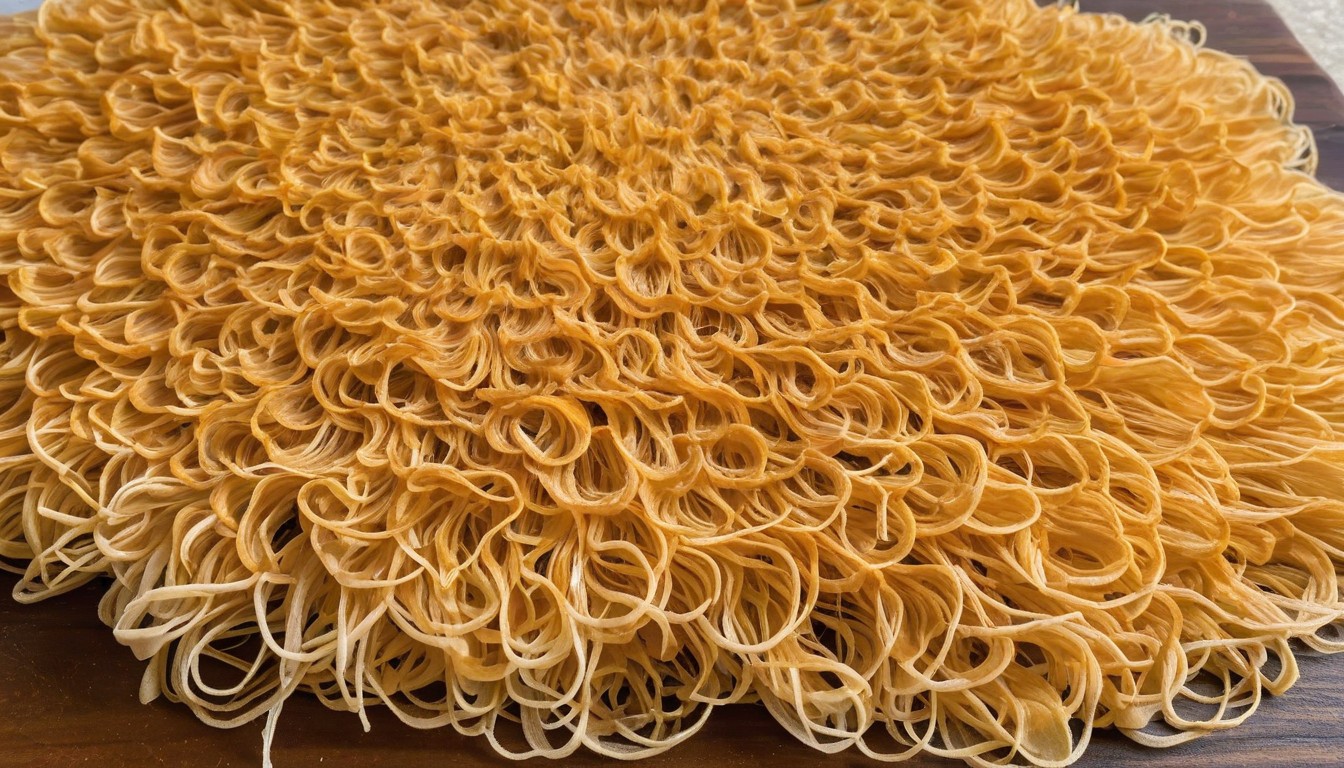
Properly cleaning and preparing your Lion’s Mane mushrooms is essential to ensure a successful dehydration process. Below, we provide a step-by-step guide on how to clean and prepare your mushrooms before drying:
Step 1: Remove Any Dirt or Debris
First, gently brush the mushrooms with a soft-bristled brush or towel to remove any dirt or debris. Avoid washing them, as they can absorb water and affect the dehydration process.
Step 2: Trim the Stems and Cut the Caps into Slices
Use a sharp knife to trim the mushroom stems, and discard any tough or woody portions. Then, cut the remaining caps into thin, even slices using a sharp knife or a mandoline slicer.
Step 3: Soak in Vinegar and Water Solution (Optional)
You can also soak the mushroom slices in a solution of vinegar and water (1:3 ratio) for 5-10 minutes to improve the taste and remove any lingering impurities.
Step 4: Rinse and Drain the Mushrooms (Optional)
If you soaked the mushrooms, rinse them thoroughly under cold running water and drain them using a colander or paper towels.
By following these simple steps, you can prepare your Lion’s Mane mushrooms for dehydration and achieve a delicious and nutritious final product.
Slicing the Lion’s Mane Mushrooms
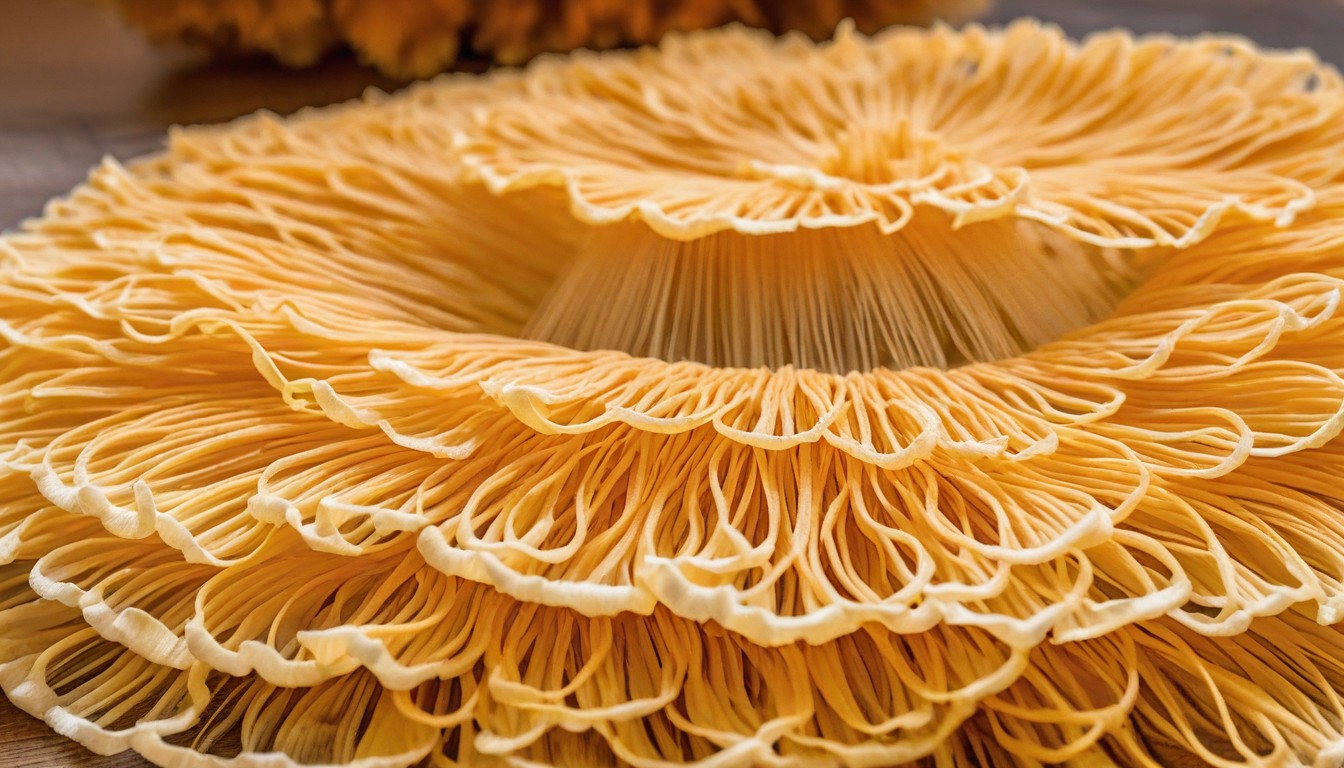
Properly slicing the Lion’s Mane mushrooms is essential to achieve even and optimal dehydration results. Here are some expert tips for the best slicing practices:
- Use a sharp knife to slice the mushrooms, as a dull blade may cause uneven cuts and bruising.
- For optimal results, slice the Lion’s Mane mushrooms into ¼ inch thick pieces.
- Make sure the slices are evenly sized to ensure an even dehydration process.
- If you prefer larger pieces for specific recipes, adjust the thickness accordingly, but keep the size consistent for even drying.
By carefully following these steps, you will avoid any under- or over-drying issues, and your final product will be perfect for your favorite recipes with Lion’s Mane mushrooms.
Drying Methods for Lion’s Mane Mushrooms
After you have selected and prepared your Lion’s Mane mushrooms, it’s time to start the drying process. There are several methods you can use, depending on your personal preference and the tools you have available.
Air Drying
Air drying is the most traditional method for dehydrating mushrooms. To air dry Lion’s Mane mushrooms, simply lay the sliced mushrooms in a single layer on a clean and dry surface. Leave them in a well-ventilated area with low humidity for several days to allow them to dry out completely.
Advantages: This method does not require any special equipment and is easy to do at home.
Disadvantages: It can take several days for the mushrooms to fully dehydrate, and the end result may not be as consistent as other drying methods.
Oven Drying
Another method for drying Lion’s Mane mushrooms is in the oven. Preheat your oven to 140°F (60°C) and place the sliced mushrooms on a baking sheet lined with parchment paper. Leave the oven door slightly open to allow moisture to escape and let the mushrooms dry for 2-3 hours.
Advantages: This method is quicker than air drying and still easy to do at home.
Disadvantages: You need to watch the mushrooms carefully to prevent burning, and the oven can use a lot of electricity during the drying time.
Food Dehydrator
A food dehydrator is a specialized machine that circulates warm, dry air around the food to remove moisture and dehydrate it. Place the sliced Lion’s Mane mushrooms on the dehydrator trays and set the temperature to 115°F (45°C) and let them dry for 8-12 hours.
Advantages: This method produces consistent and faster results. The food dehydrator uses less energy than running an oven for several hours and requires less monitoring too.
Disadvantages: It requires a food dehydrator, which can be an investment, and may not be a common household item.
Choose the drying method that suits your needs and resources. Regardless of the method, always check the mushrooms regularly and ensure they are completely dry before storing them.
Step-by-Step Dehydration Process
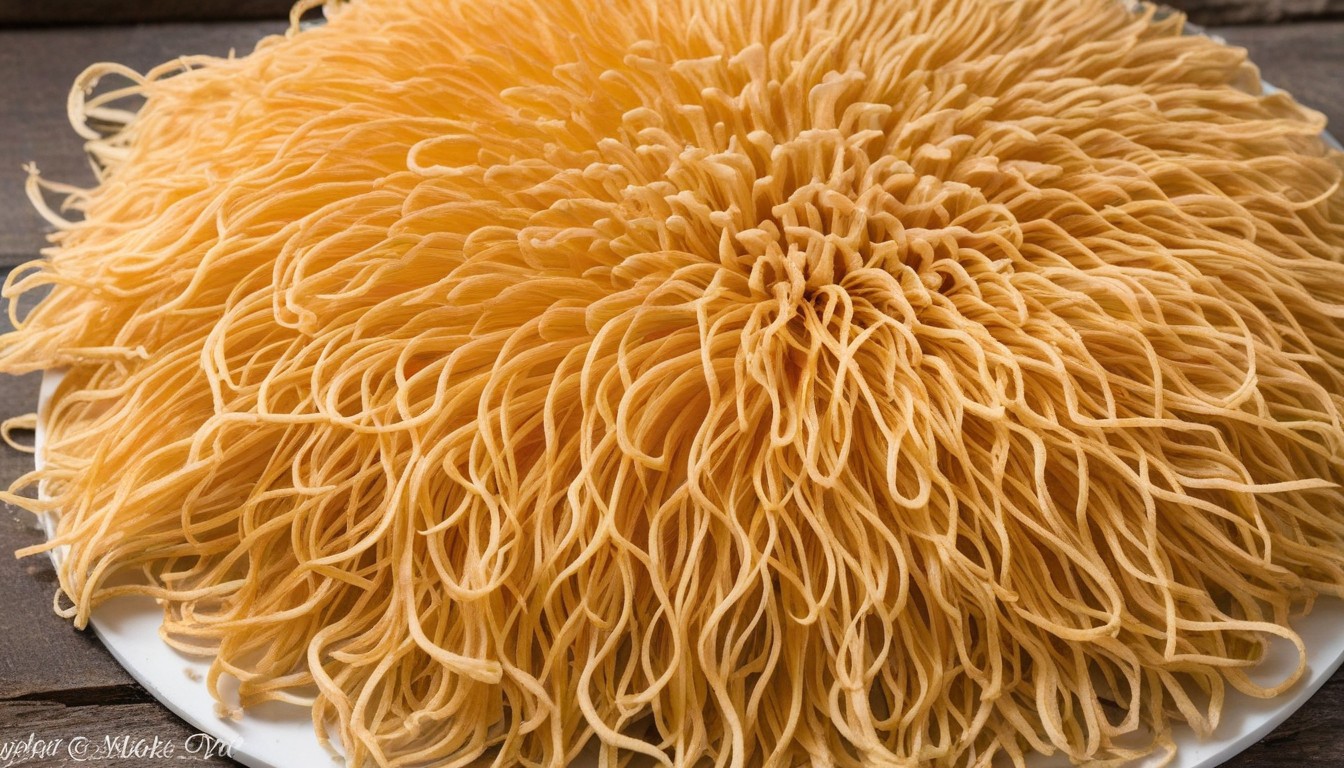
Dehydrating Lion’s Mane mushrooms is a simple process that can be achieved using three methods: air drying, oven drying, and food dehydrating. Choose the method that suits you best, gather the necessary tools and ingredients outlined in Section 2, and follow the step-by-step instructions below:
Air Drying Method
- Wash the Lion’s Mane mushrooms carefully using water, making sure to remove any dirt or debris.
- Pat the mushrooms dry using a clean kitchen towel.
- Using a sharp knife, slice the mushrooms into thin, uniform pieces. Space them out evenly on a wire rack or a baking sheet lined with parchment paper.
- Place the wire rack or baking sheet in a well-ventilated, dry area such as a bright, airy spot or a sunroom.
- Allow the mushrooms to dry for 24 to 48 hours, flipping them occasionally so that they dry evenly.
- Check to ensure that the mushrooms are completely dry and crispy. They should not have any moisture.
- Place the dehydrated mushrooms in an airtight container, and store them in a cool, dark place for up to a year.
Oven Drying Method
- Preheat your oven to 150°F.
- Wash the Lion’s Mane mushrooms carefully using water, making sure to remove any dirt or debris.
- Pat the mushrooms dry using a clean kitchen towel.
- Using a sharp knife, slice the mushrooms into thin, uniform pieces, and place onto a baking sheet lined with parchment paper.
- Place the baking sheet in the preheated oven, making sure to leave the door slightly ajar to allow for airflow.
- Allow the mushrooms to dry for 4 to 6 hours, flipping them occasionally so that they dry evenly.
- Check to ensure that the mushrooms are completely dry and crispy. They should not have any moisture.
- Place the dehydrated mushrooms in an airtight container, and store them in a cool, dark place for up to a year.
Food Dehydrator Method
- Set up the dehydrator according to the manufacturer’s instructions.
- Wash the Lion’s Mane mushrooms carefully using water, making sure to remove any dirt or debris.
- Pat the mushrooms dry using a clean kitchen towel.
- Using a sharp knife, slice the mushrooms into thin, uniform pieces, and place them onto the dehydrator trays, leaving enough space for airflow.
- Turn on the dehydrator and set it at 140°F to 150°F.
- Allow the mushrooms to dry for 6 to 8 hours or until they are completely dry and crispy.
- Check to ensure that the mushrooms are completely dry and crispy. They should not have any moisture.
- Place the dehydrated mushrooms in an airtight container, and store them in a cool, dark place for up to a year.
You’ve now successfully dehydrated your Lion’s Mane mushrooms. The next section will guide you through best practices for storing your mushrooms to maintain their flavor and quality.
Storing Dehydrated Lion’s Mane Mushrooms
Once you have successfully dehydrated your lion’s mane mushrooms, the next crucial step is storing them properly to preserve their flavor and quality. Here are some helpful tips:
TIP | DESCRIPTION |
|---|---|
Use airtight containers | Store your dehydrated mushrooms in airtight containers to prevent air and moisture from getting in |
Avoid direct sunlight | Keep your containers in a cool, dry, and dark place to avoid exposure to sunlight or heat, which can cause discoloration and loss of flavor |
Label containers properly | Be sure to label your containers with the date of dehydration so you can keep track of their shelf life |
By following these best practices for storing your dehydrated lion’s mane mushrooms, you can enjoy their unique flavor and nutritional benefits for up to a year.
Rehydrating Dehydrated Lion’s Mane Mushrooms
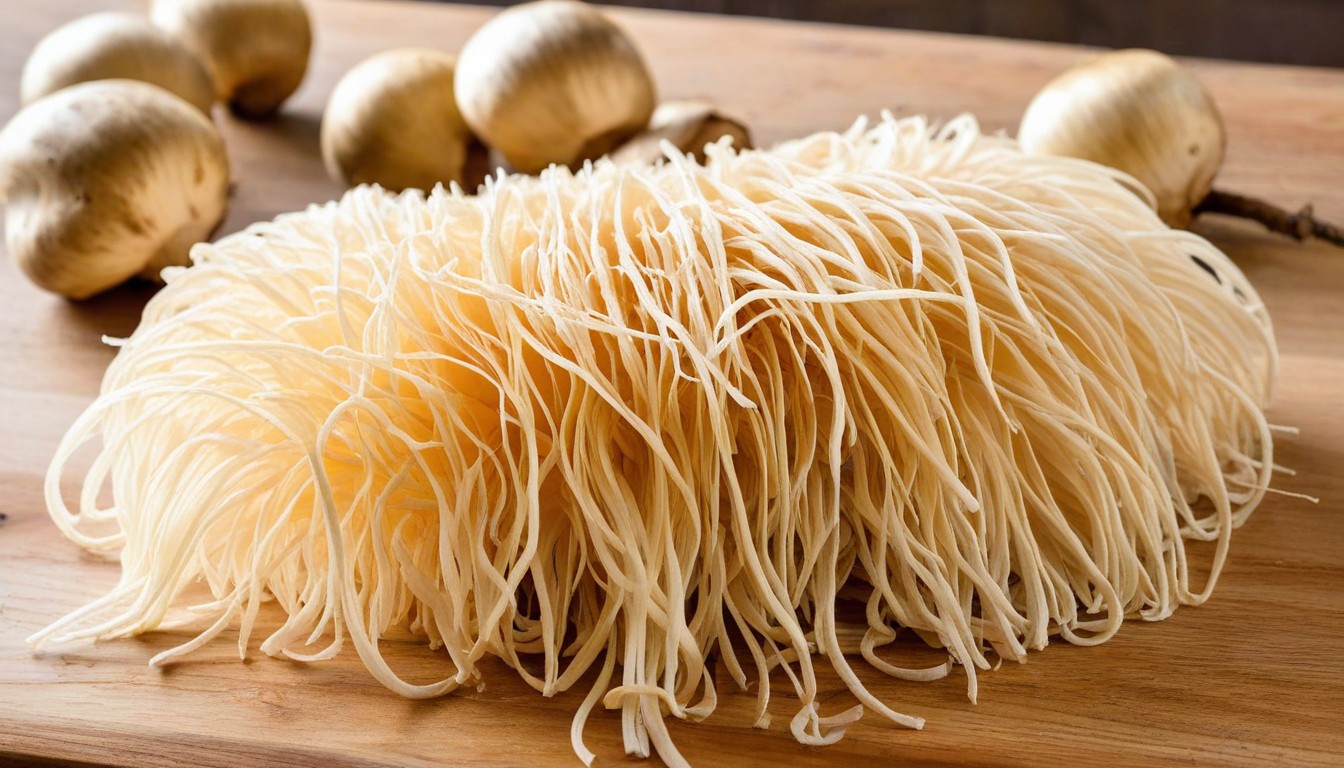
Once you’ve successfully dehydrated your Lion’s Mane mushrooms, you can easily bring them back to their original texture and flavor.
Note: Before rehydrating your mushrooms, ensure they are stored in an airtight container in a cool, dry place.
Rehydration Methods
There are several methods to rehydrate your Lion’s Mane mushrooms, including:
- Soaking in water: Simply place your dehydrated mushrooms in a bowl of water and let them soak for 30-60 minutes until they become tender.
- Simmering: Place your mushrooms in a pot and cover them with water or broth. Simmer over low heat until they become tender. This method infuses the mushrooms with additional flavor.
- Adding to dishes: Add your dehydrated mushrooms directly to soups, stews, or stir-fries to rehydrate during the cooking process.
Once your mushrooms have been rehydrated, they can be used in a variety of dishes, such as pasta, risotto, salads, and more. Enjoy the unique and earthy flavor of Lion’s Mane mushrooms in all your favorite recipes.
Culinary Uses and Benefits of Dehydrated Lion’s Mane Mushrooms
Dehydrated Lion’s Mane mushrooms offer a unique flavor profile and numerous health benefits to elevate any dish. With their meaty texture and earthy taste, they are a favorite addition to soups, stir-fries, and stews.
Their rich umami flavor makes them the perfect meat substitute for vegetarian and vegan dishes. Additionally, they can be infused in tea to make a healthy and delicious drink.
But that’s not all! Dehydrating Lion’s Mane mushrooms also enhances their nutritional content. They are rich in antioxidants, beta-glucans, and polysaccharides that boost the immune system, promote healthy digestion, and reduce inflammation.
Start experimenting with dehydrated Lion’s Mane mushrooms in your cooking today and discover the endless culinary possibilities of this remarkable fungus.
Conclusion
We hope that this guide has been helpful in your journey towards dehydrating Lion’s Mane mushrooms. By following the steps outlined in this guide, you can successfully preserve the unique flavor and nutritional benefits of this remarkable fungus.
Remember to gather all the necessary tools and ingredients, select the freshest mushrooms, and properly clean and slice them before drying. Experiment with different drying methods and find the one that works best for you.
Once you have dehydrated your Lion’s Mane mushrooms, store them properly to maintain their quality and flavor over an extended period. When you’re ready to use them, rehydrate them using one of the methods outlined in this guide.
Finally, explore the culinary uses and health benefits of dehydrated Lion’s Mane mushrooms. With its unique flavor and texture, you can use this versatile ingredient in a variety of dishes, making it an ideal meat substitute or a flavorful addition to soups and stir-fries.
Thank you for reading, and we hope you enjoy your dehydrated Lion’s Mane mushrooms!
FAQ
What tools and ingredients do I need to start dehydrating Lion’s Mane mushrooms?
To get started with dehydrating Lion’s Mane mushrooms, you will need a food dehydrator or an oven with low temperature settings, a knife or mandoline for slicing, a clean cutting board, and fresh Lion’s Mane mushrooms.
How do I select the perfect Lion’s Mane mushrooms for dehydrating?
When selecting Lion’s Mane mushrooms for dehydration, look for fresh specimens with a firm texture and no signs of decay or discoloration. Choose mushrooms that are free from dirt or debris and have a vibrant white color.
What is the process for cleaning and preparing the Lion’s Mane mushrooms?
To clean and prepare the Lion’s Mane mushrooms for dehydration, start by gently brushing off any dirt or debris. Rinse them briefly under cold water, ensuring not to soak them. Trim the stems and cut off any discolored or damaged parts before proceeding with slicing.
How should I slice the Lion’s Mane mushrooms for optimal drying?
It is recommended to slice the Lion’s Mane mushrooms into thin, even pieces, around 1/4 to 1/2-inch thick. This thickness ensures that the mushrooms dry evenly and thoroughly, resulting in optimal texture and flavor.
What are the different drying methods I can use for Lion’s Mane mushrooms?
There are several drying methods you can use for Lion’s Mane mushrooms. The most common methods include air drying, using an oven at a low temperature, or using a food dehydrator. Each method has its advantages and disadvantages, so choose the one that suits your preferences and equipment availability.
Can you provide a step-by-step guide for dehydrating Lion’s Mane mushrooms?
Certainly! We have prepared a detailed step-by-step guide on how to dehydrate Lion’s Mane mushrooms. It covers everything from cleaning and slicing the mushrooms to the actual dehydration process using different drying methods. Please refer to Section 7 for the complete instructions.
How should I store my dehydrated Lion’s Mane mushrooms?
To store dehydrated Lion’s Mane mushrooms, ensure they are completely cooled before transferring them into airtight containers or resealable bags. Keep them in a cool, dry, and dark place, away from direct sunlight, moisture, and heat, to maintain their flavor and quality for an extended period.
What is the best way to rehydrate the dehydrated Lion’s Mane mushrooms?
There are a few methods you can use to rehydrate dehydrated Lion’s Mane mushrooms. One common method is to soak them in hot water for about 15-20 minutes until they become tender. You can also add them directly to dishes with enough liquid, such as soups or stir-fries, to allow them to rehydrate during the cooking process.
What are the culinary uses and benefits of using dehydrated Lion’s Mane mushrooms?
Dehydrated Lion’s Mane mushrooms have a rich, meat-like texture and a savory umami flavor, making them a versatile ingredient in various culinary creations. They can be used in soups, stews, sauces, stir-fries, and even as a meat substitute in vegetarian or vegan dishes. In addition to their culinary uses, Lion’s Mane mushrooms are believed to possess health benefits, including immune-boosting properties and potential cognitive benefits.

